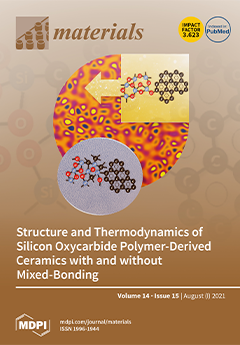The maximally disordered (MD) phases with the general formula Y
5−xPr
xSb
3−yM
y (M = Sn, Pb) are formed with partial substitution of Y by Pr and Sb by Sn or Pb in the binary Y
5Sb
3
[...] Read more.
The maximally disordered (MD) phases with the general formula Y
5−xPr
xSb
3−yM
y (M = Sn, Pb) are formed with partial substitution of Y by Pr and Sb by Sn or Pb in the binary Y
5Sb
3 compound. During the electrochemical lithiation and sodiation, the formation of Y
5-xPr
xSb
3-yM
yLi
z and Y
5−xPr
xSb
3−yM
yNa
z maximally disordered–high entropy intermetallic phases (MD-HEIP), as the result of insertion of Li/Na into octahedral voids, were observed. Carbon nanotubes (CNT) are an effective additive to improve the cycle stability of the Y
5−xPr
xSb
3−yM
y (M = Sn, Pb) anodes for lithium-ion (LIBs) and sodium-ion batteries (SIBs). Modification of Y
5−xPr
xSb
3−ySn
y alloys by carbon nanotubes allowed us to significantly increase the discharge capacity of both types of batteries, which reaches 280 mAh · g
−1 (for LIBs) and 160 mAh · g
−1 (for SIBs), respectively. For Y
5−xPrxSb
3−yPb
y alloys in which antimony is replaced by lead, these capacities are slightly smaller and are 270 mAh · g
−1 (for LIBs) and 155 mAh · g
−1 (for SIBs), respectively. Results show that structure disordering and CNT additives could increase the electrode capacities up to 30% for LIBs and up to 25% for SIBs.
Full article






